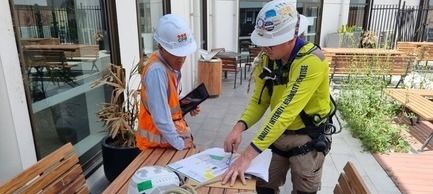In the realm of working at heights, the value of thorough training and proper certification cannot be overstated. Ensuring that every team member is well-versed in height safety practices is not just about compliance; it's about safeguarding lives and fostering a culture of safety within the workplace.
Why Training and Certification Matter
Training and certification equip workers with the necessary knowledge and skills to perform their tasks safely and effectively. This education helps workers understand potential hazards, utilise safety equipment correctly, and respond to emergencies confidently, thereby reducing the risk of accidents and injuries.
Types of Training Programs
Training programs in height safety vary, ranging from basic awareness courses to comprehensive certification programs. Some focus on general safety principles, while others are tailored to specific equipment or scenarios, such as scaffold safety, ladder safety, or rescue operations. Choosing the right program depends on the nature of the work and the specific risks involved.
Benefits of Ongoing Education
Ongoing education in height safety ensures that workers' skills and knowledge remain current. It helps employees stay updated on the latest safety standards, technologies, and best practices. Continuous learning also reinforces safety protocols, helping workers to maintain a high level of safety awareness in their daily tasks.
A Well-Trained Workforce: Your Best Asset
A well-trained workforce is invaluable in creating a safe working environment. Educated employees are more likely to recognise potential hazards, make informed decisions, and effectively use safety equipment. They also contribute to a safety-conscious culture, where every team member understands their role in maintaining a safe workplace.
Conclusion
Investing in training and certification for height safety is essential for any organisation that requires workers to operate at heights. It's an investment in your team's well-being, productivity, and the overall safety culture of your workplace. By prioritising education, you're not just complying with regulations; you're taking a proactive step toward a safer future for everyone involved.
Stay informed, stay safe, and remember that when it comes to height safety, knowledge is as crucial as your safety harness.
